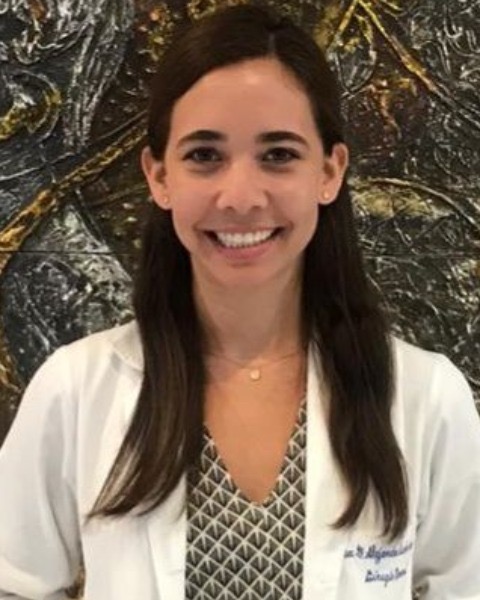Breast
E35: Positive Sentinel Lymph Node Biopsy after Neoadjuvant Chemotherapy: Can Completion Axillary Lymph Node Dissection Be Safely Omitted?

Gabriela Alejandra Buerba, MD MSc
Complex Surgical Oncology Fellow
University of Toronto
Toronto, Ontario, Canada
Gabriela Alejandra Buerba, MD MSc
Complex Surgical Oncology Fellow
University of Toronto
Toronto, Ontario, Canada
Gabriela Alejandra Buerba, MD MSc
Complex Surgical Oncology Fellow
University of Toronto
Toronto, Ontario, Canada- DL
David W. Lim, MDCM MEd PhD
Breast Surgeon
Women's College Hospital, Canada - NL
Nicole J. Look-Hong, MD MSc
Surgical Oncologist
Sunnybrook Health Sciences Centre, Canada - FW
Frances C. Wright, MD MEd
Surgical oncologist, Professor
Sunnybrook Health Sciences Centre, United States
ePoster Abstract Author(s)
Submitter(s)
Author(s)
The current standard of care for patients with breast cancer with a positive sentinel lymph node biopsy (SLN) after neoadjuvant chemotherapy (NAC) is a completion axillary lymph node dissection (cALND). In our centre, highly selected patients were offered no further surgery following a positive SLN post NAC. The aim of this real-world study was to assess outcomes and factors associated with increasing axillary disease burden.
Methods:
Patients with a first primary invasive breast cancer receiving neoadjuvant chemotherapy followed by surgery with curative intent at single tertiary cancer centre in Toronto, Ontario, Canada between January 2014 and June 2021 were retrospectively reviewed. Demographic, clinical, and pathologic data were abstracted from the prospective institution database. Primary outcomes were disease-free (DFS) and overall survival (OS), assessed using the Kaplan-Meier method. Factors associated with additional non-SLN positive lymph nodes were assessed by multivariable linear regression.
Results:
409 patients were included, of whom 238 underwent a SLNB following NAC. A positive (macro/micrometastasis) SLN was identified in 64 patients. Of these, 33 patients underwent cALND and 31 had no further surgery (sentinel lymph node only, SLNo). Median follow-up was 48.2 months (IQR 29.9). The 4-year locoregional DFS was 93.5% for the SLNo group and 97% for the cALND group (p = 0.825, Figure 1). All locoregional recurrences were in patients with triple negative tumors. Distant DFS and OS did not differ between groups (87.1% vs 78.8%, p = 0.551; 87.1% vs 87.9, p =0.818, respectively). Postoperative lymphedema was higher in the cALND group (57.6% vs 9.7%, p < 0.001).
The median number of dissected SLN was 4 (IQR 3) for both groups, with a median positive SLN of 1 (IQR 0) for the SLNo group and 2 (IQR 3) for the cALND group (p < .001). The number of additional positive LN obtained during cALND was 1 (IQR 2). These were macrometastases in 79%. The positive SLN ratio was the only statistically significant factor for the prediction of additional LN. A ratio ≥ 0.58 had a specificity of 87% and a sensitivity of 72% to identify ≥ 2 additional positive LN with a cALND, although no significance was reached (AUC .887, p = .07, 95% CI 0.744 – 1.02). In this study, we observed no difference in DFS or OS between patients who had a cALND and those who did not after four years. Lymphedema was significantly higher in the cALND group. Our short-term oncologic outcomes suggest that in selected patients, SLNo plus adjuvant radiation could be an appropriate treatment.
Conclusions:
Learning Objectives:
- Analyze the impact of completion axillary lymph node dissection in disease control and overall survival
- Recognize the higher rate of lymphedema in patients who undergo axillary lymph node dissection after neoadjuvant chemotherapy and adjuvant radiation therapy.
- Analyze disease factors associated with higher burden of axillary disease after neoadjuvant chemotherapy for breast cancer
